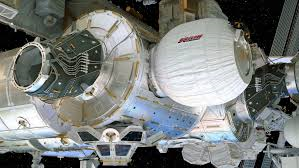
Breaking News
 Outrage Erupts as Released MS-13 Gang Member Kilmar Abrego Garcia...
Outrage Erupts as Released MS-13 Gang Member Kilmar Abrego Garcia...
 The backbone of U.S. capital markets just got the green light to move $100 trillion onchain
The backbone of U.S. capital markets just got the green light to move $100 trillion onchain
 SILVER IS ENTERING A "GENERATIONAL" SQUEEZE.
SILVER IS ENTERING A "GENERATIONAL" SQUEEZE.
Top Tech News
 EngineAI T800: Born to Disrupt! #EngineAI #robotics #newtechnology #newproduct
EngineAI T800: Born to Disrupt! #EngineAI #robotics #newtechnology #newproduct
 This Silicon Anode Breakthrough Could Mark A Turning Point For EV Batteries [Update]
This Silicon Anode Breakthrough Could Mark A Turning Point For EV Batteries [Update]
 Travel gadget promises to dry and iron your clothes – totally hands-free
Travel gadget promises to dry and iron your clothes – totally hands-free
 Perfect Aircrete, Kitchen Ingredients.
Perfect Aircrete, Kitchen Ingredients.
 Futuristic pixel-raising display lets you feel what's onscreen
Futuristic pixel-raising display lets you feel what's onscreen
 Cutting-Edge Facility Generates Pure Water and Hydrogen Fuel from Seawater for Mere Pennies
Cutting-Edge Facility Generates Pure Water and Hydrogen Fuel from Seawater for Mere Pennies
 This tiny dev board is packed with features for ambitious makers
This tiny dev board is packed with features for ambitious makers
 Scientists Discover Gel to Regrow Tooth Enamel
Scientists Discover Gel to Regrow Tooth Enamel
 Vitamin C and Dandelion Root Killing Cancer Cells -- as Former CDC Director Calls for COVID-19...
Vitamin C and Dandelion Root Killing Cancer Cells -- as Former CDC Director Calls for COVID-19...
 Galactic Brain: US firm plans space-based data centers, power grid to challenge China
Galactic Brain: US firm plans space-based data centers, power grid to challenge China
First expandable habitat installed on ISS

Beginning at 2:15 am EDT, controllers at the Johnson Space Center in Houston used one of the station's robotic arms to remove the 1,400-kg (3,086-lb) inflatable habitat module from the depressurized trunk of the unmanned Dragon cargo ship, which docked with the ISS on April 11. Over a four-hour period, the deflated BEAM was guided to Tranquility's aft assembly port, where station astronauts attached it using common berthing mechanism controls at 5:36 am EDT.
The first human-rated inflatable structure to fly in space, the BEAM is intended to test the feasibility of expandable module technology, which could provide living and working areas for astronauts while reducing launch costs. It was flown to the ISS aboard the Dragon, which launched from Cape Canaveral Air Force Station Launch Complex 40 on April 8.
In May, a pressurization system will be activated to use air stored within the fabric module to inflate it to a length of four m (13 ft) and a diameter of 3.23 m (10.6 ft). A week later, astronauts will enter it briefly for the first time for inspection.

 This is not a bubble.
This is not a bubble.


